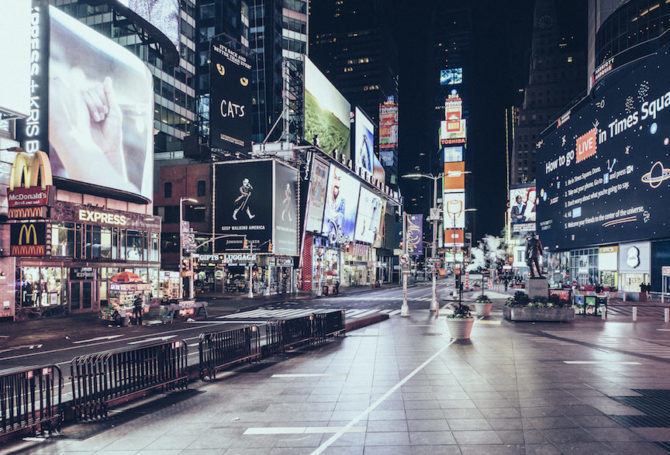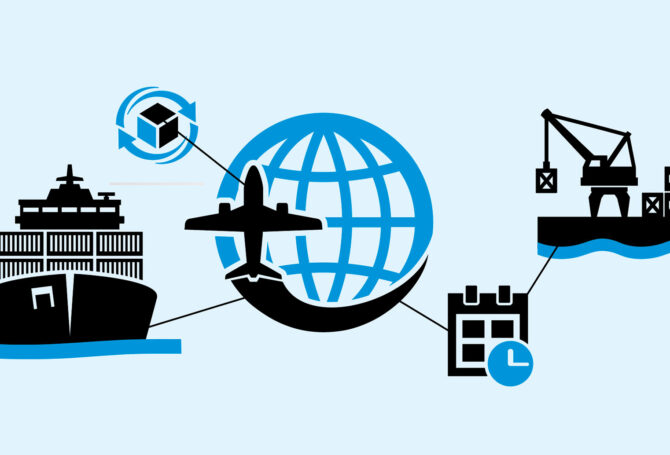
The coronavirus pandemic will pass, but will life afterward return to normal or will there be a new normal? You can’t shut down the world and expect nothing to change. Here are some possibilities:
Social distancing becomes a thing. Government officials are pleading for us to keep our distance to slow the spread of the virus. But it’s possible what we’ve been instructed to do becomes something we enjoy doing and keep doing after the shelter-in-place orders are lifted. This isn’t far-fetched. People forced to lose weight for health reasons often wind up falling in love with different, previously shunned food groups, swapping salads for super-sized fries. Young adults are already practiced at social distancing. They spend hours engaging friends on Instagram and Tik Tok without uttering a word or moving from their couch. Older adults might begin to follow their lead.
Suddenly universal basic income is a good idea. Democratic presidential candidate Andrew Yang promoted it in his campaign, but the idea of sending $1,000 per month to every American seemed too revolutionary or hard to fathom for many voters. Now the notion has taken root in the just-enacted $2.2 trillion federal emergency relief bill with most Americans eligible for a $1,200 government-issued check to keep them afloat during community lockdowns. The City of Stockton in California has a running start on implementing a universal basic income scheme. In its pilot program, Stockton sends $500 debit cards each month to residents in the hope of encouraging people living paycheck-to-paycheck to seek health care and buy food. There are initial signs it may be having the desired impact. However, it also has raised concerns about whether policymakers may view monthly checks as a substitute for Medicaid and SNAP benefits or a reason to back off on donations to local food banks. If the coronavirus lockdown continues into late spring or summer, there may be pressure on federal officials to approve another round of checks, institutionalizing the payouts as part of the social safety net.
Working remotely becomes the norm, not the exception. A significant number of workers already work remotely. Now a big chunk of the rest of the workforce is getting a taste of the experience. They may like it enough to keep doing it. It’s common to see mentions on social media from housebound teleworkers who note they enjoy not having to commute on congested roads everyday. One of the perceived drawbacks of remote worksites is the inability to collaborate with fellow workers. However, television and radio shows are carrying on with anchors, reporters and weatherman doing their jobs in broadcast harmony from living rooms, basements and backyards. Orchestras are playing concert music from the remote reaches of their home music rooms. Technology tools have improved so much that you can hardly tell, except for the different backgrounds, that they are working and performing in disparate locations. The appeal may be catching on, which could have huge implications for public transportation and downtown office space.
Working at home turns into pleasant surprise. Working remotely and working at home aren’t exactly the same thing. Home has different kinds of distractions, such as children who aren’t attending school and ignored chores. All you have to do is watch late-night TV host Jimmy Fallon broadcast from home with his young daughter on his back to realize that distractions can become special moments. Spending more time with family members as part of a work schedule can inject discipline into a daily routine, as well as relieve stress and strengthen interdependencies. Workers can play a greater role in their children’s development, provide care to aging parents and let family members see what you do. Of course, working at home isn’t an option for every occupation, but as more jobs become automated, it might have wider application than is immediately evident.
More students may opt for online learning. Students from preschool through graduate school are forced to learn at home because of school closures, and they may learn to like it as well as or better than going to classrooms. Online learning options have exploded with a broader audience giving them a try. Promoters of online learning have always ballyhooed the idea of individualized instruction geared to the skill level and learning style of each student. While online learning isn’t free, it may be less costly than preschools for parents or than adding new classrooms to handle growing student populations. Online learning could be an educational upgrade for gifted children, a lifeline for struggling students and an opportunity for students interested in specialized technical fields. It also could be a way to share the skills of super-teachers to more students than fit in a classroom. An important implication of online learning is the need for public investment to level the playing field in terms of at-home computers for lower-income families and high-speed internet access for rural communities.
Urban centers may lose some of their appeal. More people around the world are flooding to cities to live and work and for the amenities urban centers offer from nightclubs to art museums. As COVID-19 illustrates, congested cities make the transmission of deadly viruses easier, as refrigerated trucks filled with corpses outside of New York hospitals underscores. The appeal or urban life isn’t expected to evaporate because of COVID-19, but it could cause some workers and companies to look for retreats in less urban settings. This could be a boon for the economies of nearby suburbs or even outlying rural communities that suddenly have suitors for available commercial and industrial land and buyers for new or vintage housing.
Now we understand why we have public health. The cobweb that we call the US public health system has been lost in the pitched debate over health care reform. We have a public health system for the same reason we have public schools and public highways. Unlike schools and highways, public health isn’t a top-of-mind concern until an earthquake, environmental catastrophe, mass addiction or pandemic. What the COVID-19 outbreak has brought home is that our public health system, if it can fairly be called a system, has huge gaps and a lack of some form of central control when there is a national disaster. Public health, which can range from public school clinics to clinics for homeless people, is largely left out of the discussion of how we should organize our health care system because it is largely MIA from health insurance coverage or hospitals. Breakdowns in fundamental tasks such as ensuring health care providers have all the protective equipment they need or hospitals have the ability to handle a surge of critically ill patients should prompt post-pandemic reflection and policy action to strengthen the public health system and add it to the national debate over health care reform.
Object lesson in global supply chains. Glaring shortages of goods, including in prescription drugs and medical equipment, are causing questions about relying so heavily on overseas producers and globalized supply chains. While it is unlikely and unwise to see the US and Chinese economies to disengage, there may greater openness to decentralized and duplicative producers around the world, as well as repatriation of some production lines to the United States. Savvy policymakers may view this as an opportunity to find incentives for repatriated production. This was supposed to be an outcome of the corporate tax cut and now it should be a major consideration in the corporate relief that is about to be doled out.
Travel may not behold the same allure. The devastation to the travel industry caused by locking down large chunks of the developed world may be followed by an even more ominous form of devastation if people elect to travel less on cruise ships or for extended foreign visits. The current wave of the COVID-19 pandemic is expected to crest as summer arrives, but epidemiologists warn the virus could spread to the Southern Hemisphere during its winter and return to the Northern Hemisphere in its fall. That warning could discourage would-be travelers and extend the misery for airlines, hotels, resorts and destinations. The fear of traveling will eventually abate, but not until after the landscape of the tourist industry has undergone a major overhaul, affecting major attractions, cities and even entire regions. Opportunists who can deliver the benefits of travel without the fear of actually travelling may have a winning hand. That could take the form of smaller cruise ships, curated travel experiences or virtual reality travel experiences.
Predictions are just that. One thing is for sure – the pandemic has spurred a sobering Aha! moment that has literally changed the world as we know it. We will see whether the resolve in the wake of a trail of death leads to action so we are better prepared to conquer the next global challenge.



